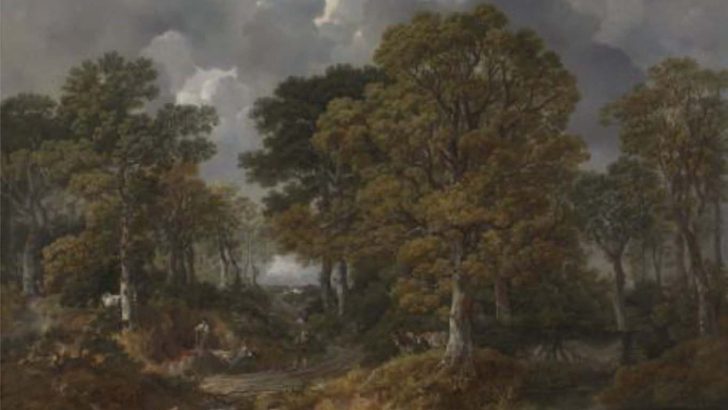Young Gainsborough: Rediscovered Landscape Drawings Curated by Ann Hodge
Runs to 12 June 2022; Print Gallery, National Gallery of Ireland | free admission (This exhibition has been organised in collaboration with the Royal Collection Trust, the York Museums Trust, the National Gallery of Ireland and Nottingham Castle.)
Thomas Gainsborough was hugely productive of drawings, so it might be thought that the items in this show are hardly remarkable. But these twenty five items from his earlier years come with a fascinating back story.
In 1873 Queen Victoria acquired the drawings from the dispersal of the collection of Sir Edward Landseer, famous for his animal pictures and sculptures who had been a great favourite and friend of the queen and the late prince consort. These creations were then thought to be by Landseer himself, and his name was stamped on the cover made for them.
But more recently an astute piece of detective work in 2017, by art historian Lindsay Stainton (previously assistant keeper of prints and drawings at the British Museum) identified one of the drawings as a preliminary study for Gainsborough’s very celebrated landscape painting from his early 20s, Cornard Wood (c.1748), leading to the immediate reattribution of the set to Gainsborough.
The 20 drawings have now come to Dublin and they make an exhibition that should not be missed.
Portraits
For many people Gainsborough is known for his portraits. These were very literally his means to live. What he truly preferred was to draw and paint landscape – a painting such as Mr and Mrs Andrews seems in its stiffness an unhappy compromise for the artist.
Beyond man in nature as conceived by Rousseau, he was moreover absorbed (as were the later Romantics and Neo-Romantics in England) by the particularity of particular things.
A sentence by the painter John Piper read many years ago has long lodged in my memory: “Romantic art deals with the particulate. The particularisation of Bewick about a bird’s wing, of Turner about a waterfall or a hill town, of Rossetti about Elizabeth Siddall, is the result of a vision that can see in these things something significant beyond the ordinary significance, when the moment seems to contain the whole world; and, when the moment is past carries over some comment on life or experience beside the comment on appearances.”
That seems to me a remark of great significance for many people. These drawings – especially those in the first room – reveal this. These trees might seem to be idealised expressions of trees, but they are not, they are particular, singular trees.
Now these drawings being studies may seem ‘unfinished’, but in reality they aren’t. The individual trees in the wooded landscape are all very carefully and quickly delineated. He manages to see both the woods and the trees.
They manage, I thought, in a remarkable way to capture the creativity of the artists pencil at work, to record creation on the wing. There is a lot to see in them.
Prominence
Cornard Wood which hangs in prominence on the back wall of the print room is a wonderful thing, and an amazing thing for so young an artist, and has long been admired. But these drawings too are admirable.
Any young person interested at all in art will be surprised and delighted by what is on display here. This is an exhibition, small and selected though it is, which provides lasting insights into the vision of the young Gainsborough. His delight in nature and drawing contrasts so sadly with the darker moments of his later life.
(Lindsay Stainton is the author of Landscape into Art (British Museum Press) and many other books on aspects of art history.)


 Peter Costello
Peter Costello Cornard Wood, by Thomas Gainsborough
Cornard Wood, by Thomas Gainsborough